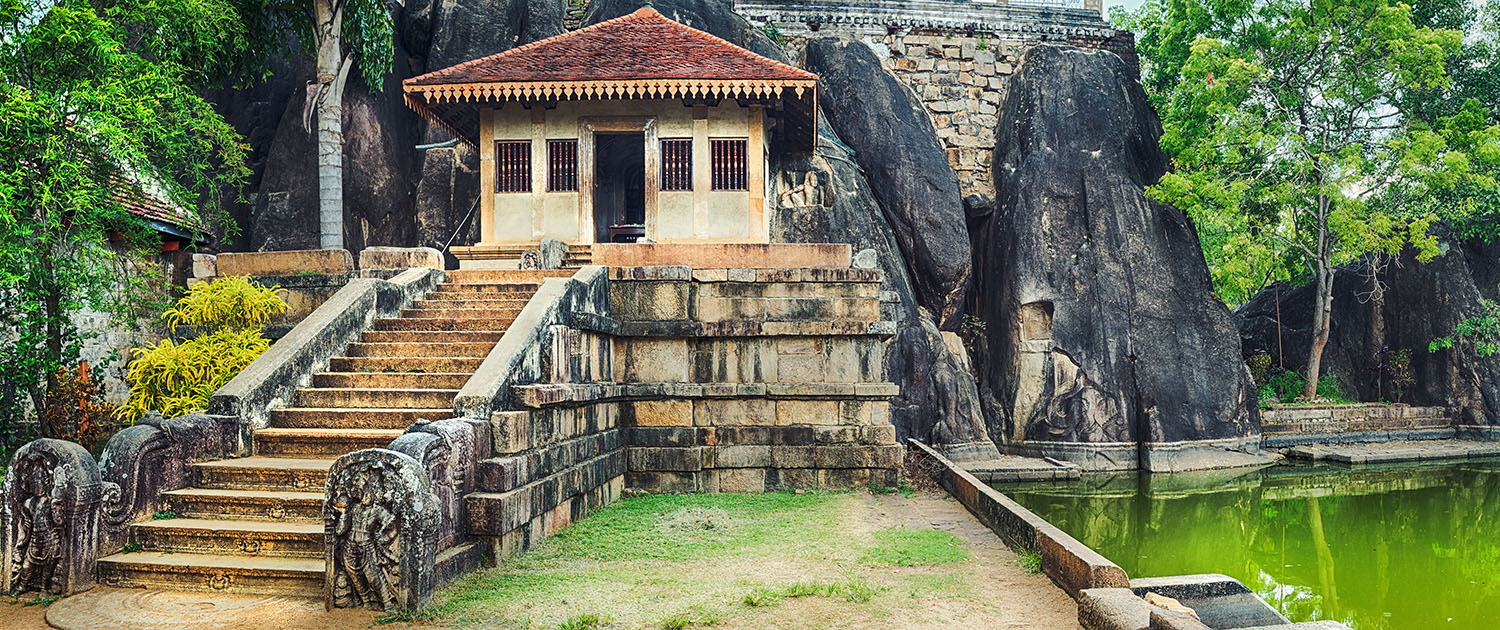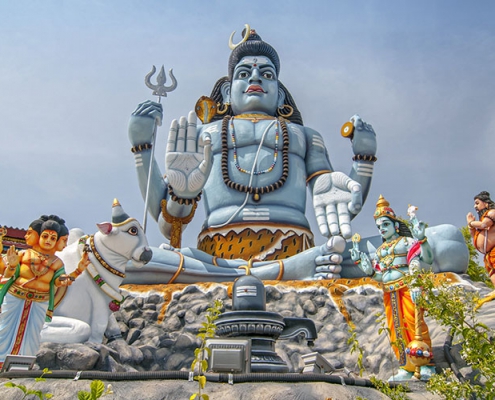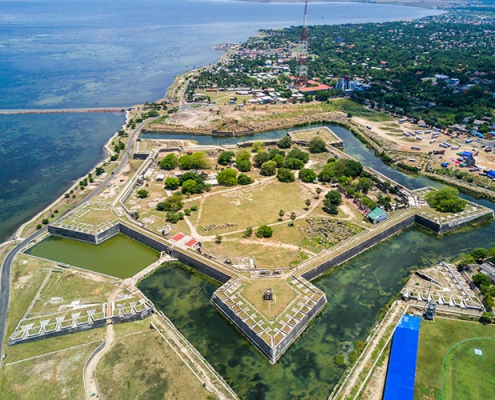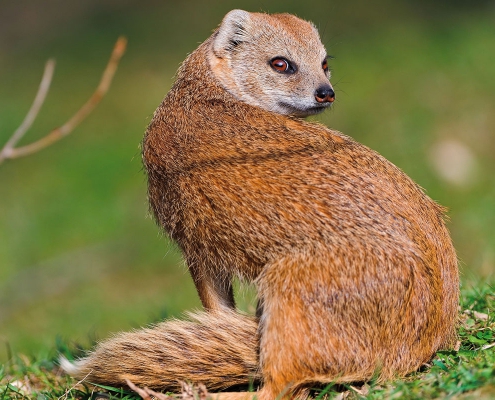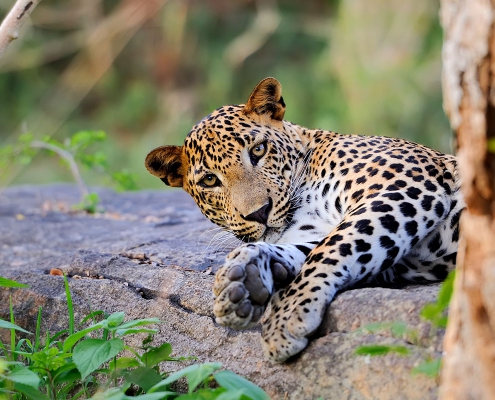The Sri Lankan Penchant
- Price/Pers. from…
1’130€
- Details…
10 days / 9 nights, private tour
This tour takes you back in time through the natural as well as manmade marvels. With a history of 2500 years, there is abundant sightseeing in ancient architecture indigenous to Sri Lanka or for the reason that you would like to relive the vintage of the Monarchs. Sri Lanka is known to some of Asia’s most captivating religious and cultural charms, containing intricate sculpture and architecture, and spectacular festivals, enlightening the spirit of Sri Lankas enthralling history, and vibrant cultural penchant.
Ask us for a quote
"*" indicates required fields
Please note that the price remains indicative. The exact rates depend on your actual travel periods. Supplements may apply during the high season, as well as discounts or promotions at other times of the year.
DAY 1
Airport - Hunumulla
Pick-up at the airport and short transfer for lodging located in the heart of a coconut estate, 25 minutes from the airport. Enjoy the pool, the garden and the special atmosphere created by the majestic coconut trees.
Hunumulla is located in the outskirts of Negombo, a typical fishing town within close proximity to the airport surrounded by swanky plantations of coconut palms whilst inhaling the soul of the sea. Its economy is largely based on tourism and its centuries-old fishing trade. Negombo is also known for its delectable seafood on galore.
Overnight.
DAY 2
Wilpattu
After a hearty breakfast, a three and a half hour scenic drive will take you to the largest national park in Sri Lanka. Situated along the coastal boundary as well as in adjacent to the borders of Anuradhapura, Wilpattu is renowned to be the home as the highest density of Leopards in the world. The park is also home to many other wildlife species such as Elephants, Deer, Boars and Mongoose. During the monsoon season from December to February, the waters entice the wildlife and are beautified by the flora and fauna in this swanky environment.
After the completion of the safari, drive to Anuradhapura for overnight.
DAY 3
Anuradhapura
After a traditional breakfast is sightseeing.
Originated in the 4th century, Anuradhapura became Sri Lanka’s first capital two hundred years later and is the apex of the island’s supreme monarchies. Anuradhapura was home to many Monks from various hermitages, and remains as Sri Lanka’s most imperative cultural site. The ruins are extremely well-conserved.
The sacred and ancient Bo tree resonates a significant dwelling in Anuradhapura, which originally derived from a sapling of the Bo tree in Buddha Gaya- India, in 288 BC brought by Princess Sangamiita, the daughter of King Asoka, where Lord Buddha sat under and received enlightenment.Overnight.
DAY 4
Anuradhapura - Jaffna
After breakfast, journey by train to Jaffna.
A stronghold of Hindu traditions, art and creative ethos, Jaffna welcomes visitor’s unstingly. The North of Sri Lanka’s absolute frontier. It is captivating and offers an opportunity to sightsee a region emerging from over three decades of seclusion and civil war
In the afternoon, we recommend you to explore some of the highlights during the city tour.
Visit the public library of Jaffna, a historical icon at one time reserved over a hundred thousand books including primeval literature by distinguished scholars. The library was rated the largest in Asia before it was horrifyingly burnt down during the early years of war.
Afterwards, continue via Doreappa Stadium which was named after the former Mayor of Jaffna and then towards the Jaffna Dutch Fort, which remains as one of Sri Lankas well conserved colonial structures built by the Dutch. The fort is undoubtedly the most picturesque overlooking the Kayts causeway against the backdrop of the lagoon.
For yonks, the Nallur Kovil has been an epitome to the Hindus, and an embodiment to other faiths. The endowment of the Kovil is an important legacy to the people of the North. The Nallur festival which is the longest festival in Sri Lanka happens annually in August and lasts for nearly a month includes parades of dancing, drumming and traditions.
Shaded by the Palmyrah trees and spread across a mass territory Kantarodai is the Kadurugoda Temple, which is an ancient ruin as well as an archaeological location.
Tip: Don’t forget to taste the famous Jaffna Crab curry!
Overnight.
DAY 5
Jaffna
Enjoy a traditional Breakfast to be further fascinated of the Northern charms.
Early morning a visit Point Pedro, the most Northern point of Sri Lanka. Surrounded along the coastal line, you may also be able to see a glimpse of the Southern coastal tip of India.
Later, take the Kayts causeway, the road that brings you from Jaffna fort across the water to the island of Kayts. The name Kayts is said to have invented by the Portuguese term of Cais, which means port, since it was line of trade as Elephants from Sri Lanka were transported to India and the port was referred to as Cais dos Elefantes. It was sanctified as Kayts during the British colonization. You will be intrigued when traveling along the labyrinths in Kayts, the simpleminded life of this charming island.
Your final stop for the day is Fort Hammenhiel, a small island between Kayts and Karaithivu. The Portuguese built the fort in the mid-17th century with quarried coral and caled it Fortaleza Real. The Dutch restored and renamed it as Hammenhiel.
Tip: Dont forget to taste the Jaffna grown Mango known as the Karutha Colomban !
Overnight.
DAY 6
Jaffna
The drive takes you across two adjacent islands, to the jetty to board a congested ferry on a short journey to either the Nagapooshani Amman Kovil, or the Nagadeepa Purana Viharaya. Both places function as entry and exit to Nainativu. You may also opt to walk or hop a short tuk-tuk ride for a thorough tour.
In local dialect, Nagadeepa purana as it is referred to as Sri Lanka’s most visited islands and bears a momentous dwelling for Buddhists since it is respected as a holy site where it is believed that Lord Buddha has on an occasion settled a dispute between two kings of the ancient Naga inhabitants.
For Hindus, the Nagapooshani Amman Kovil is as sacred to ancient scripts of 64 Shakthi Peethams in South Asia, or sanctuaries devoted to Shakthi, the Hindu goddess of power.
Overnight.
DAY 7
Jaffna - Trincomalee
The end of the charms marks the beginning of a rhapsody. Most visitors exit Jaffna through the Elephant Pass and drive past the War Memorial. At present it is the site of two major war memorials, which attract many sightseers. The swamps bordering the causeway are stunning, with an aquamarine sea fringed by blotches of white sand and mangroves, with local and migrant birds congregating.
Passing Elephant pass you will passage through stark plains until you reach Killinochchi. Today, it is a vibrant town and one sight that is the lifelong image when the Sri Lankan flag was hoisted at the end of the three decade war.
In approximately 4 hours by road, you will reach Trinco for overnight.
DAY 8
Trincomalee
Trincomalee is perennially known for the largest natural harbor in Sri Lanka. The shaded beach is a haven for sunbathers who are in search of privacy during their holiday. For sun, sea, sand and surf enthusiasts, the beaches of Trincomalee offers an unrivaled experience especially between April to November.
In the morning, a boat ride will take you to the neighboring Pigeon Island, which has some fabulous inlets that is home to the Blue Rock Pigeon as well as an ideal spot for snorkeling.
In the afternoon, you will visit the Thirukoneswaram Kovil, a vastly acclaimed Hindu Shrine that mounts on the cusps of the Swami rock enhancing the scenery. One of the key highlights is Fort Fredrick. The sea cliff has a treacherous drop of one hundred feet to the sea, which also is called the Lovers Leap, concomitant to a romantic tale of a woman who jumped to her death from the edge of the cliff.
Overnight in Trincomalee.
DAY 9
Trincomalee - Hunumulla
On the penultimate day, half way down approximately a six hours drive back to Hunumulla, we will make our final stop at the Dambulla cave temple, situated in the cultural triangle of Sri Lanka. Tracing back to 1st century BC, this is the most treasured cave temple in Asia. The temple has five caves artistically transformed to shrines. The ceilings of the caves are festooned with methodically painted patterns of devout frescoes in conjunction with the natural outlines of the rock. The cave monastery continues to be one of the well-preserved ancient monuments in Sri Lanka and also continues that appeal to many devotees and visitors. At the summit of the Dambulla rock is the splendid sight of the savannahs underneath the Sigiriya rock fortress standing out.
Arrive in Hunumulla for overnight.
DAY 10
End of tour
All good things must come to an end.
Check out and transfer to Airport.
- Airport transfers
- Transportation by A/C car or Japanese Mini Van
- Driver/ guide
- Accommodation in standard hotels and camp
- International flights
- Entry fees
- Drinks and personal expenses
- Meals not mentioned in the program
- Activities and excursions not mentioned or optional against supplement
- Cancellation and repatriation insurance
- Visa fee for Sri Lanka (approx. USD 50.- to be done online)

